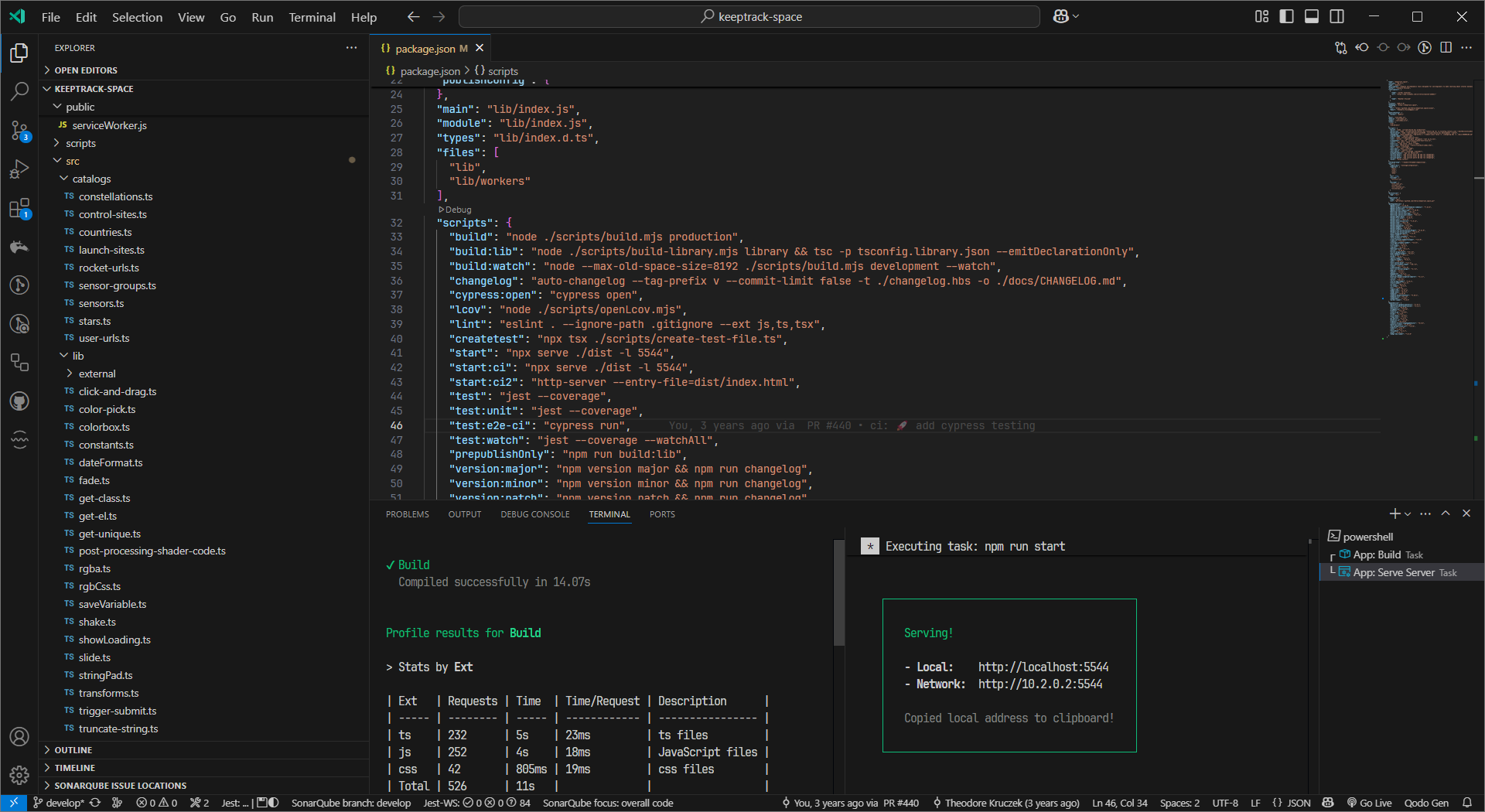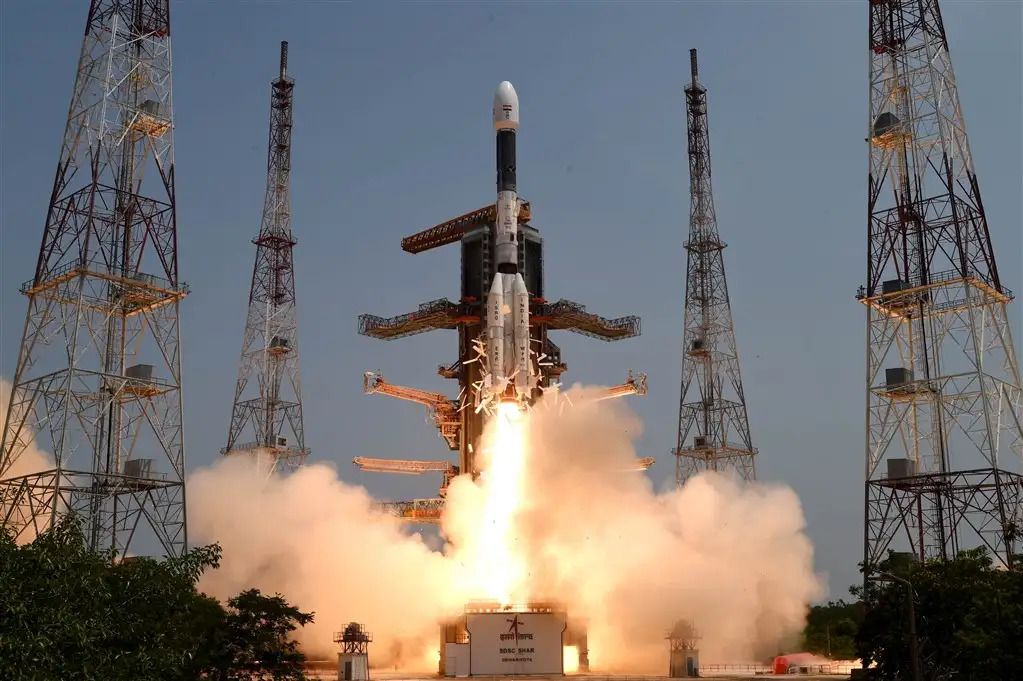· space brief · 6 min read
Space Brief 26 Jun 2025
Exploring new defense agreements with Eutelsat, advances in U.S. Space Force projects, and updates on NATO's strategic discussions.

📄Top Stories
Today’s brief highlights Eutelsat’s new agreement to enhance French military satellite communications, part of a grand strategy to secure space technology integration. The U.S. Space Force advances with its STEP 2.0 initiative to push forward orbital technology. As NATO faces strategic decisions, U.S. leadership reaffirms its alliance stance amid external concerns.
📰Detailed Coverage
Eutelsat Enhances French Military Comms Capabilities
Eutelsat has entered into a landmark agreement with France’s Ministry of the Armed Forces, emphasizing the integration of civilian and military satellite services. This collaboration is part of France’s NEXUS program, which aims to strengthen national security through advanced space technologies. The agreement was formalized at the recent Paris Airshow, representing a significant step towards a more secure and interconnected defense environment via low Earth orbit satellites.
Technically, the initiative focuses on dual-use infrastructure, offering secure communications across various theaters of operation. The partnership underscores the global trend of leveraging commercial satellite capabilities for defense purposes, reflecting the growing importance of satellite tracking in national security strategies.
Read the full story: Spacewar
Axient Joins Next-Gen Space Tech Initiative
Axient LLC, through its legacy identity as Astrion, has joined the U.S. Space Force’s ambitious Space Test Experiments Program (STEP) 2.0. The initiative, set to receive funding of up to $237 million over the next decade, aims to foster cutting-edge innovations in orbital technologies. As one of 12 select contractors, Axient will contribute to rapid advancements enhancing U.S. space defense capabilities.
STEP 2.0 encompasses a flexible framework for delivering advanced space technologies and strategies designed to secure American interests in orbit. This program is pivotal for those engaged in satellite tracking due to the potential innovations in technology that could optimize our web app’s satellite tracking features.
Read the full story: Spacewar
U.S. Reassures NATO Amid Strategic Discussions
As global defense dynamics evolve, NATO’s latest meetings are focusing on updating strategic priorities. U.S. military leadership, spotlighted by Lt. Gen. Alexus Grynkewich, is poised to direct efforts towards aligning collaborative defense strategies across the Atlantic alliance. This comes as NATO mulls over its defense “shopping list,” where U.S. input plays a crucial role.
These discussions underscore the interconnectedness of international defense strategies, particularly concerning space assets and technology sharing. The reaffirmation of U.S. commitment to NATO’s umbrella of security is crucial in navigating the geopolitical landscape of satellite defense and monitoring.
Read the full story: Breaking Defense
Trump Reaffirms Commitment to NATO Alliance
During the recent NATO summit, President Trump reiterated the United States’ dedication to the alliance, countering recent speculations about possible shifts in mutual defense obligations. His statement comes at a time when NATO’s unity in responding to emerging threats is under scrutiny, emphasizing the ongoing strategic importance of transatlantic cooperation in defense matters.
This affirmation is significant for satellite tracking enthusiasts and professionals, as it reassures that multinational collaborations in space surveillance and defense technologies will continue to be a priority. Such alliances are vital for sharing intelligence and coordinating responses to potential orbital threats.
Read the full story: Breaking Defense
🛰️Satellite Spotlight
- Satellite Name: COSMOS 2524
- NORAD ID: 43032
- Launch Date: December 2, 2017
- Mission: Equipped for signals intelligence (SIGINT), COSMOS 2524 is designed to intercept and analyze electronic communications.
- Orbit: LEO (Low Earth Orbit)
- Operator: VVKOV
- Fun Fact: COSMOS 2524 is part of Russia’s Yantar reconnaissance program, which focuses on military intelligence gathering.
Track this satellite in real-time on our web app: Track COSMOS 2524
🌌Space Weather
Current space weather shows Enhanced solar wind (688 km/s).
Current
R0 - S0 - G0
Last 24 Hour Maximums
R0 - S0 - G0
Recent Alerts
- Warning: Geomagnetic K-index of 5 expected from June 25, 2025, to June 26, 2025.
- Impact: Minor power grid fluctuations and potential satellite operation disturbances; aurora visible in northern U.S. regions like northern Michigan and Maine.
- Alert: Geomagnetic K-index of 4 reached, affecting areas mostly poleward of 65 degrees Geomagnetic Latitude.
- Impact: Potential for minor fluctuations in power grids and auroras in Canada and Alaska.
- Watch: G1 (Minor) geomagnetic storms predicted for June 26-27, 2025.
- Impact: Similar potential impacts as above, with auroras possibly visible in northern U.S. regions.
- Warning: Geomagnetic K-index of 4 expected, valid from June 25, 2025, to June 26, 2025.
- Impact: Minor fluctuations in power grids and auroras may be observed.
- Continued Alert: Electron 2MeV Integral Flux exceeded 1000 pfu since June 23, 2025.
- Impact: Increased charging risk to satellite systems.
Next 24 Hours
-
Radio Blackouts Probability
- Minor: 30
- Major: 5
- Risk: None
-
Solar Radiation
- Probability: 5
- Risk: None
-
Geomagnetic Storming
- Scale: 1
- Impact: minor
- Activity: Moderate
-
Impact Summary
- No risk of radio blackouts.
- No risk of solar radiation storms.
- Moderate geomagnetic activity with minor geomagnetic storms likely.
- G1 (Minor) geomagnetic storming is anticipated on June 26-27 due to negative polarity coronal hole high-speed stream effects.
- A chance for R1-R2 (Minor-Moderate) radio blackouts may persist through June 28.
Long Term Forecast
- Forecast of Solar and Geomagnetic Activity (June 23 - July 19, 2025)
- Solar activity is expected to range from low to moderate levels.
- Possible R1-R2 (Minor-Moderate) radio blackouts, with a slight chance for R3 (Strong) events until July 18.
- No proton events expected at geosynchronous orbit.
- Electron flux at geosynchronous orbit likely to reach high levels on June 26-28.
- Geomagnetic activity forecasted to reach G1 (Minor) storm levels on June 25-26 and active levels on specific dates due to recurrent coronal hole high-speed stream influences.
- Quiet to unsettled conditions expected for the remainder of the period.
Upcoming Space Launches
June 26
- Rocket Lab Electron:
- Get The Hawk Outta Here (4x HawkEye 360) from Rocket Lab Launch Complex 1, Mahia Peninsula, New Zealand (17:00 UTC) HawkEye 360 is a space-based civil global intelligence satellite network using radio frequency (RF) technology for monitoring and emergency assistance.
June 28
-
SpaceX Falcon 9 Block 5:
- Starlink Group 10-34 from Cape Canaveral SFS, FL, USA (04:26 UTC) A batch of satellites for the Starlink mega-constellation, providing space-based Internet communication.
-
Japan Aerospace Exploration Agency H-IIA 202:
- GOSAT-GW from Tanegashima Space Center, Japan (16:33 UTC) This mission involves JAXA’s next generation satellite to monitor greenhouse gases and the water cycle.
-
SpaceX Falcon 9 Block 5:
- Starlink Group 15-7 from Vandenberg SFB, CA, USA (16:43 UTC) Another batch of satellites for the Starlink mega-constellation, enhancing global Internet accessibility.
June 29
- Blue Origin New Shepard:
- NS-33 from Corn Ranch, Van Horn, TX, USA (12:00 UTC) NS-33 marks the 13th crewed flight for the New Shepard program.
June 30
-
Rocket Lab Electron:
- Symphony In The Stars from Rocket Lab Launch Complex 1, Mahia Peninsula, New Zealand (00:00 UTC)
-
China Aerospace Science and Technology Corporation Long March 12:
- SatNet LEO Group TBD? from Wenchang Space Launch Site, People’s Republic of China (00:00 UTC) This launch will carry a batch of Low Earth Orbit communication satellites for the SatNet constellation.
-
China Aerospace Science and Technology Corporation Long March 8:
- G60 Group TBD from Wenchang Space Launch Site, People’s Republic of China (00:00 UTC) This mission involves launching communication satellites for the G60 constellation, which will eventually consist of 1296 satellites by 2027.
July 1
- SpaceX Falcon 9 Block 5:
- Starlink Group 10-25 from Kennedy Space Center, FL, USA (05:52 UTC) This launch will deploy more satellites for the Starlink mega-constellation to enhance global satellite internet coverage.
Note: Launch dates and times are subject to change due to technical or weather considerations.

Maurice Stellarski





